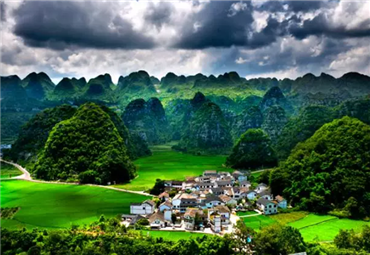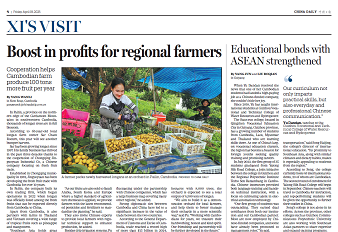Guizhou embarks on green development path

Zhuhai National Forest Park in Chishui, Guizhou province. [Photo/ddcpc website]
With the concept that "lucid waters and lush mountains are invaluable assets" deeply rooted in its development, Guizhou province in Southwest China has embarked on an environmentally friendly development path and added more forest resources for the benefit of local residents.
Enhancing ecological beauty
From 2012 to 2022, Guizhou implemented afforestation projects on farmland covering 11,300 square kilometers, as well as on rocky mountains and desertified areas spanning 13,100 sq km, ranking first in the country in terms of desertification treatment and afforestation.
By 2022, the forest coverage rate of Guizhou reached 62.81 percent, making the province one of the greenest regions in China, far exceeding the world and national averages.
The province has established 53 wetland parks, while cities such as Guiyang, Zunyi, Liupanshui, Tongren, and Qiannan Bouyei and Miao autonomous prefecture have been named "National Forest Cities."
Sixteen places in the province have achieved the titles of national demonstration zones for ecological civilization construction – China's environmental strategy for sustainable development – and practice and innovation bases for the "lucid waters and lush mountains are invaluable assets" development philosophy.

A carbon sink ticket issued by Bijie, Guizhou province. [Photo/ddcpc website]
Cashing in on carbon sinks
A carbon sink ticket certifies that a forest's reduced carbon emissions can be traded, pledged or offset. A carbon sink is anything that absorbs more carbon dioxide from the atmosphere than it releases. Forests represent net carbon sinks as they take in more carbon than they emit – which has a commercial value that can be traded on a specialist exchange.
Currently, by exploring the carbon sink ticket model, Guizhou has developed eight forestry carbon sink tickets, with a credit approval of 508 million yuan ($70.22 million) and loans worth 173 million yuan.
The single-tree carbon sink project is another innovation launched by Guizhou in 2018. By the end of this January, 11,920 households in 35 counties of the province have joined in the project by planting more than 4.74 million trees for carbon sink trading, with 4.48 million trees sold and each household increasing their income by around 1,100 yuan.

A worker removes garbage from the river at the Xiaoqikong Scenic Area in Libo, Guizhou province. [Photo/ddcpc website]
Accelerating change
Based on its healthy ecological environment, Guizhou has developed forest-derived industries such as traditional Chinese medicinal herbs, edible fungi, and related tourism to increase local people's income. By 2022, the total operating area of forest-derived businesses exceeded 19,733 sq km, and the total output value of the forestry industry reached 403.5 billion yuan.
Next, the province will promote green and low-carbon development, striving to achieve a forest coverage rate of 64 percent and develop over 3,333 sq km for forestry carbon sink projects.
Meanwhile, the province will initiate the construction of an integrated service system for the forest-derived economy, and conduct pilot projects to help realize the ecological product value of Chishui, Dafang, Jiangkou, Leishan, and Duyun.
All rights Reserved. 京ICP备13028878号-8







 Overview
Overview Guiyang
Guiyang Guian New Area
Guian New Area Liupanshui
Liupanshui Anshun
Anshun Qianxinan
Qianxinan Qiandongnan
Qiandongnan Qiannan
Qiannan Zunyi
Zunyi Tongren
Tongren Bijie
Bijie Guizhou commits to culture preservation and rural vitalization
Guizhou commits to culture preservation and rural vitalization Guizhou voice at 2025 national two sessions
Guizhou voice at 2025 national two sessions Meet the 'genius moms' at Shenzhen cultural fair
Meet the 'genius moms' at Shenzhen cultural fair 

